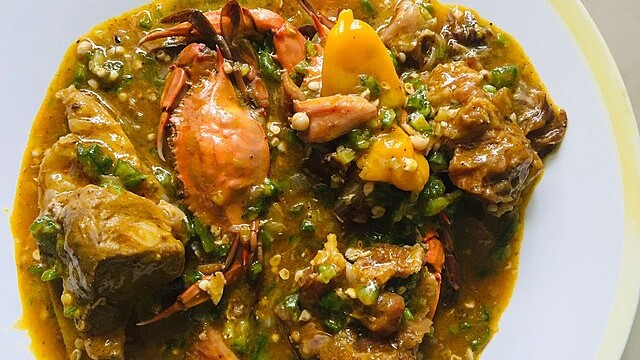In Gabon, meals are more than nourishment; they are a reflection of history, geography, and the interwoven traditions of over 40 ethnic groups. From bustling markets in Libreville to coastal fishing towns and remote inland villages, the country’s cuisine tells a story of abundance and adaptation.
At the center of that story is cassava, a resilient tuber that has long anchored Gabonese diets. Transformed into fufu—a smooth, starchy paste—it appears alongside soups and stews, providing a canvas for flavors that range from mild to fiery. Among the most celebrated accompaniments is moamba, a rich stew of chicken or fish simmered with palm oil, groundnut paste, and an array of spices. The dish, deeply comforting, speaks to both local ingenuity and the wider culinary influences that have passed through Central Africa over centuries.
The coastline, stretching more than 500 miles along the Atlantic, adds its own character. Grilled fish, or poisson braisé, marinated with garlic, ginger, and chili, is a staple in seaside towns. Often served with piment—a sharp, pepper-based sauce—it captures the interplay of sea and spice that defines so much of the region’s cooking. Markets in Port-Gentil or Libreville regularly display gleaming fish on beds of ice, evidence of how the ocean remains an ever-present force in Gabonese kitchens.
Vegetable-based dishes also play a prominent role. Saka-saka, made from cassava leaves cooked with palm oil and onions, is both rustic and deeply flavorful, frequently paired with rice or fried plantains. It is a dish that demonstrates how everyday ingredients, drawn directly from surrounding forests and fields, can become central to communal meals. For many families, these greens provide not only sustenance but also a continuity of tradition passed down through generations.
The sweeter side of Gabonese cuisine emerges in its fruit and desserts. Mangoes, papayas, and bananas appear in fresh juices and market stalls, offering relief in the tropical heat. On special occasions, cooks prepare kanda, a sweet potato pudding enriched with coconut, its earthy sweetness balanced by subtle spice. Such recipes, though less widely known beyond Gabon, embody the celebratory spirit of local cuisine.
Markets themselves form part of the experience. The Marché du Mont-Bouet in Libreville, one of the largest in Central Africa, overflows with produce, spices, and prepared foods. The air is heavy with the aroma of smoked fish and sizzling chicken, while stalls display baskets of peppers and tubs of palm oil. To wander such spaces is to glimpse not only the ingredients of Gabonese cooking but the social rituals that surround it.
Gabon’s cuisine, shaped by its landscapes and its people, is a living record of cultural resilience. In every bowl of stew or grilled fish shared on the coast, the layers of influence—indigenous practices, colonial encounters, regional trade—are present. Taken together, they form a culinary identity that is unmistakably Gabonese, rooted in tradition yet adaptable to the present.
Sources
- Perrois, Louis. Arts du Gabon. Orstom Éditions, 1985.
- Fernandez, James W. Persuasions and Performances: The Play of Tropes in Culture. Indiana University Press, 1986.
- UNESCO Intangible Cultural Heritage. “Food and Culinary Traditions in Central Africa.” Accessed 2025.
- Food and Agriculture Organization (FAO). “Cassava and Food Security in Africa.” Accessed 2025.


